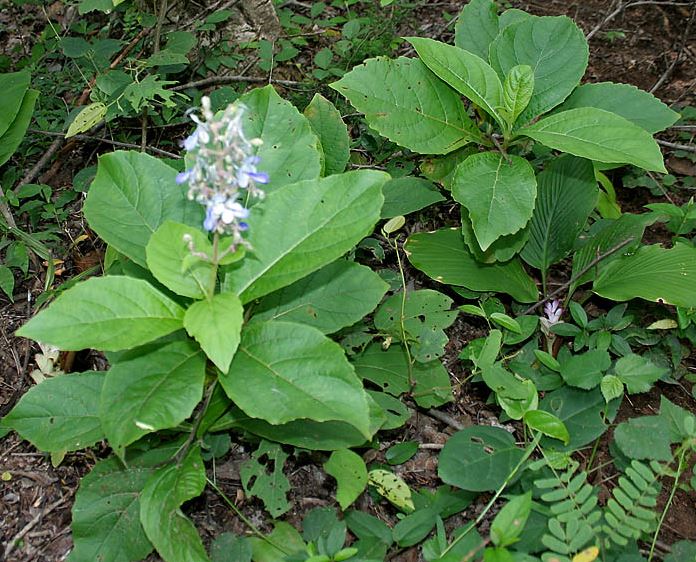Blue Fountain Bush Leaves - Unlocking the Nutritional Riches: A Comprehensive Guide to Vitamins, Minerals, and More
It is native to India, Sri Lanka and Malaysia.
If Blue Fountain Bush (Rotheca serrata Bio Name) leaves are consumed as a regular vegetable in certain regions, particularly in northern India, Tamil Nadu and Konkan region, it suggests that they have culinary uses. In many cultures, various plant leaves are used as leafy greens and incorporated into local cuisines. These greens often provide essential nutrients and can be a valuable source of vitamins, minerals, and dietary fiber.
Using Rotheca serrata leaves as a vegetable can be a way to diversify your diet and enjoy the potential health benefits that leafy greens offer. However, it’s always a good idea to ensure that the leaves are prepared and consumed safely, following local culinary practices.
Rotheca serrata, commonly known as “Blue-flowered glorybower,” is native to various regions in Africa. It originates from the African continent and is found in countries such as South Africa, Kenya, Tanzania, and Ethiopia. This plant is well adapted to the diverse climates and habitats of Africa and is known for its attractive blue or violet flowers. While it is primarily grown for ornamental purposes, as mentioned earlier, its leaves may also have culinary uses.

Nutrients
Water: Leaves typically have a high water content of 80 to 90%.
Carbohydrates: These are essential for energy and can include sugars and fibers.
Proteins: Leaves contain proteins that contribute to their structural integrity and various physiological functions.
Fats: Leaves may contain small amounts of fats, which are important for energy storage.
Vitamins: Blue fountain bush leaves can be a source of various vitamins, including vitamins A, B, and C.
Minerals: Essential minerals such as calcium are present in blue fountain bush leaves.
Salt: The leaves may contain salt (sodium chloride).
Starch: Starch, a complex carbohydrate, may also be present in the leaves.
Again, the specific amounts of these nutrients can vary based on factors like soil conditions and plant health. If you need precise nutritional information, laboratory analysis would be necessary.
Health Benefits
Rich in Vitamins A, B, and C: Supports immune system function (Vitamin C).
Contributes to skin health and vision (Vitamin A).
Plays a role in energy metabolism and nervous system health (Vitamin B).
Calcium Content: Essential for bone and teeth health.
Contributes to muscle function and blood clotting.
Starch and Carbohydrates: Provides a source of energy.
Protein Content: Supports the body’s growth, repair, and maintenance.
Fats: While in small amounts, healthy fats are crucial for various bodily functions.
Salt: Sodium is essential for maintaining fluid balance and supporting nerve and muscle function.
Hydration (Water Content): Supports overall bodily functions and helps maintain hydration.
Other Health Benifits
: Kidney Stone Prevention: Blue fountain bush is believed to offer protection against the formation of kidney stones.
Cataract Prevention: Consumption of blue fountain bush may be associated with a reduced risk of cataracts.
Enhanced Memory Power: It is thought to contribute to stronger memory power.
Digestive Cleansing: The plant is believed to have cleansing properties, beneficial for the stomach.
Pregnancy Support: Blue fountain bush is considered beneficial for pregnant women.
Blood Sugar Regulation: It may aid in controlling blood sugar levels by strengthening insulin function.
Red Blood Cell Development: Consumption is associated with the development of red blood cells (RBCs).
